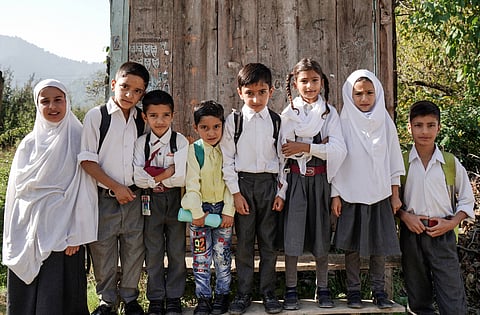School children in Anantnag district, Jammu and Kashmir. Research shows that the prevalence of post-traumatic stress disorder among children in the region has increased in the last two decades.IMAGO/Zuma Press Wire
Politics
The many traumas of children of conflict on the India–Pakistan border
The decades-long conflict between India and Pakistan has forced children into conditions of chronic stress, anxiety and malnutrition, with high levels of PTSD reported in Indian-administered Kashmir
This reporting was supported by the Dart Center for Trauma and Journalism’s Global Early Childhood Reporting Fellowship.
Late one night in 2020, a mortar shell struck a house in Balkote village, in the Indian union territory of Jammu and Kashmir. A seven-year-old girl living in the house suffered her first anxiety attack that night. When I met her family this year, the girl’s father, Mehraj Ahmad, told me that as they prepared to move to a nearby bunker, the child began howling and pleading for her life. “Since that night, she often wakes up in the middle of the night, shouting the same desperate plea – ‘Please save me, I don’t want to die.’”

